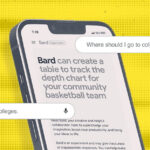Search Engine Optimization, or SEO, can feel intimidating to even the savviest of marketers. After all, Google, which owns roughly 75% of the search market, tweaks their search algorithms multiple times per day. And with so much competition for attention, it can feel impossible to make a measurable impact on your website’s organic search traffic. But a few small tweaks can make a world of difference. Below, we demystify search engine optimization, explain the primary metrics used by search engines to properly assess your web pages, and share examples of successful SEO updates.
Demystifying SEO: How Small Changes Can Increase Your Organic Search Traffic
In this article, we demystify search engine optimization, explain the primary metrics used by search engines to properly assess your web pages, and share examples of successful SEO updates.
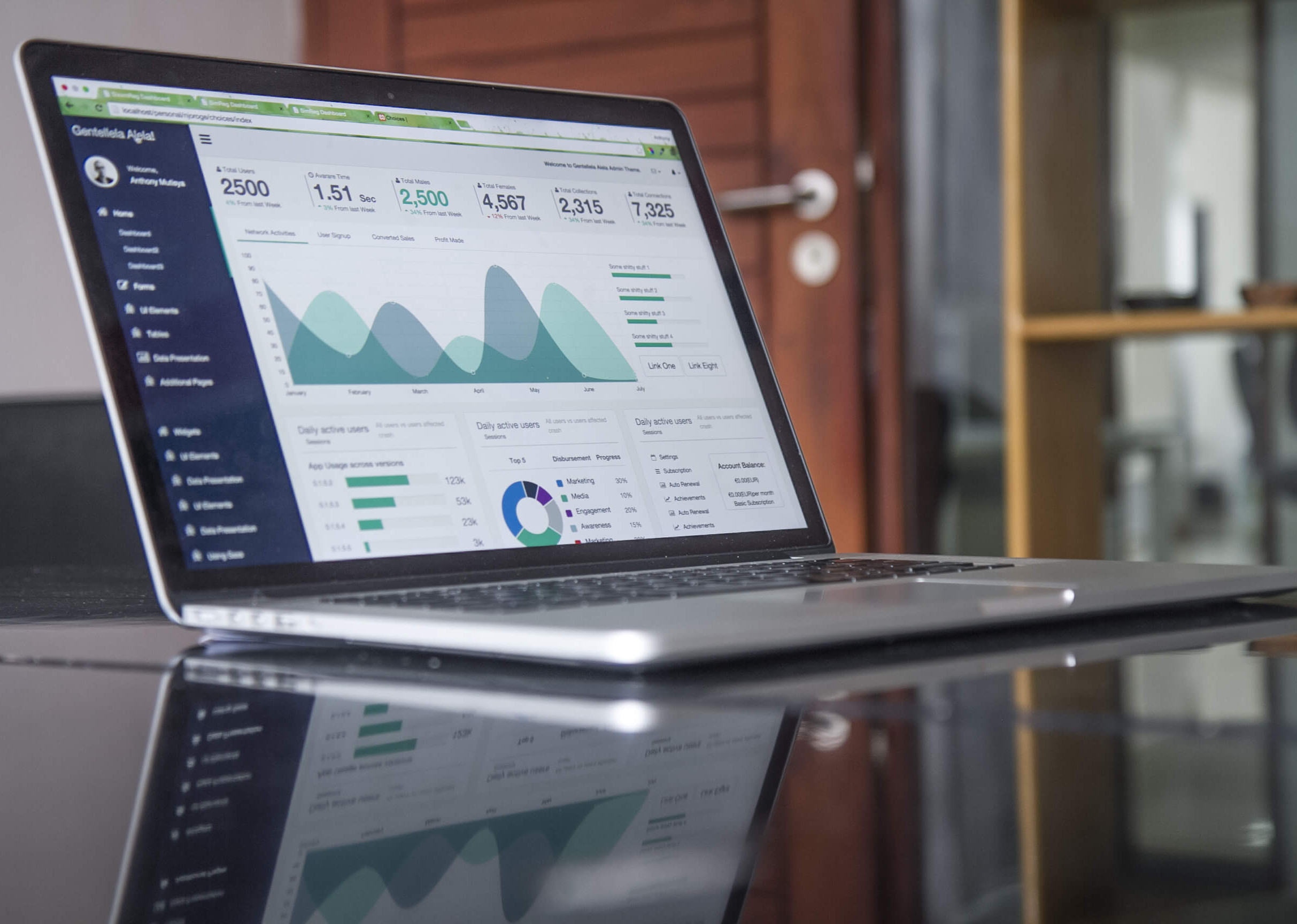
What is Search Engine Optimization?
Perhaps the best way to explain search engine optimization, or SEO, is to clarify what it isn’t. SEO isn’t your web page headings, keywords, images, and page titles. Rather, SEO is the practice of increasing the organic search rank of your web pages through the process of updating headings, keywords, images, and page titles, among other things. In a nutshell, Google’s business model relies on providing users with the best results based on their search. SEO is about helping Google recognize how your web page accomplishes that goal. Let’s imagine, for a moment, that you’re a 17-year-old prospective college student. Your mailbox and inbox are full of promotional materials from schools and colleges who acquired your information when you took the SAT. But you want to conduct your own research. Where do you turn? In all likelihood, Google. You have a decent idea of what you want to study, but you’re open to where you want to study. So you type in something broad like, “archaeology programs.” Within seconds, Google presents you with a list of programs, schools, articles, and rankings. How do schools get their content listed on the first page of those search results? SEO.
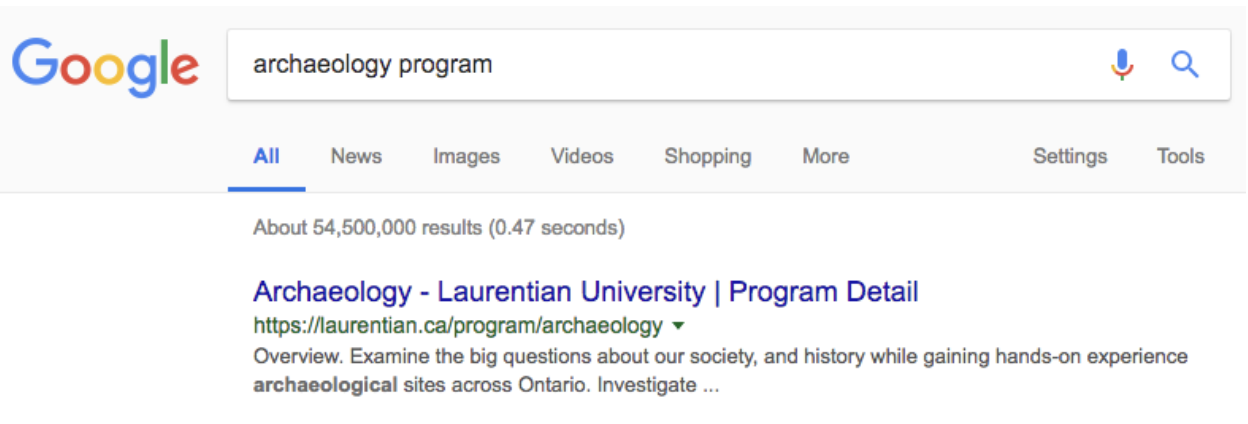
What factors influence my organic search rankings?
Google is notoriously private when it comes to its search algorithm. That’s partly to protect its product; if publishers get too clear a picture of how to increase their search rank, they’ll game the system with illegitimate tactics, ultimately creating a poor user experience that will harm Google’s market share. But that’s also partly due to logistical purposes; Google has been known to update its search algorithm between 500-600 times a year, with only a handful of updates classified as a major upgrade that significantly impacts search results. Announcing each algorithm update would be overwhelming for everyone. Despite limited communication, marketers today have a pretty fair understanding of the factors that impact SEO. These factors fall into two camps: owned and earned. Owned factors include the following items:
Keywords
Keywords have long been the foundation of a solid SEO strategy. At the core of every online search is a keyword or key phrase. (“Archeology programs” in our example above.) As a marketer, your role is to understand the topic of a given web page, and then optimize the page so that it ranks well for the keywords that relate to that topic. Editor’s Note: we’ll be publishing a new article devoted solely to keywords in the coming weeks.
Metadata
Metadata includes items that appear in search results, like your page title and description. These snippets are what show up in a search result, and are highly influential in whether or not a user will click on your link over other search results.
 Titles and Headings
Titles and Headings
Historically, page titles and page headings were considered important technical components of a web page, as Google gave them more credit when crawling a page. But as Google’s algorithm has become more sophisticated, the significance of these components — especially page headings — have shifted. Today, your page titles and headings are more about guiding your reader through your content than guiding Google’s search bots.
Body Copy
Again, the significance of your body copy has shifted over time. In years prior, black-hat, or shady, marketers would simply stuff a keyword into the body copy as many times as possible to rank highly within Google. But Google quickly figured that out and adjusted its algorithms accordingly. Today, the best SEO copywriting advice is to ignore Google and focus on your audience. If you can write accessible articles that exhaustively or quickly answer the question of your user, you’ll be just fine here.
Images
Google’s search bots are incredibly sophisticated at reading all elements of your web page, but one area where they need help is in reading the images you embed. Luckily, you can help Google by giving your images “alt text,” which is an information field that Google can crawl. When you consider that Google Image searches make up roughly 20-25% of all web searches in the United States, making your images “findable” is pretty darn important. And finally, if this all wasn’t reason enough to add “alt text”, doing this will also make your page WCAG 2.0 compliant, allowing users with vision impairment and screen readers the ability to understand the content of your image.
Page Speed
It feels as though page speed has only recently become a focal point for marketers. In actuality, Google began factoring page speed into its algorithm nearly a decade ago. Page speed has taken additional importance recently with the rise of voice search. One study by Backlinko found the average voice search result page loads in 4.6 seconds, 52% faster than the worldwide average. Page speed is about more than SEO, of course. Several companies, including Walmart and Amazon, have experienced revenue losses attributable to slow page load time. Why is page speed so important? As users become more accustomed to instantaneous gratification, in the form of social media feeds and mobile-optimized e-commerce sites, their tolerance for a slow experience has shortened. Interestingly, humans tend to make this problem worse than it actually is. One study by Yahoo!’s Stoyan Stefanov found that users tend to perceive load times as being 15% slower than they actually are. If you’re unsure as to how quickly your web pages load and how to improve its performance, Google’s PageSpeed test can offer helpful insights.
Of course, SEO isn’t just about your webpage. Google long ago recognized that the best signals of quality content don’t come from your metadata, keywords, or body copy, but from your peers. Specifically, Google measures how many other web pages link to your web page, as well as the quality of those domains who link to your content.
Inbound Links
An inbound link is a link from a third-party domain into a particular page on your website. Google sees these links as an endorsement of your content. You know that phrase, “It’s not a popularity contest?” Well, inbound links are a type of popularity contest.
Domain Authority
Of course, Google doesn’t just care about how many web pages are linking to your web page. They care about the quality of those links. A link from a well-respected website, like the New York Times or the Washington Post, for example, carries more weight than a link from a new website or rarely visited one. Context also matters here: links from related websites carry more weight than inbound links where Google doesn’t see a topic connection.
What does Search Engine Optimization look like?
The list of SEO factors above is by no means exhaustive. And in many ways, that is exactly what can cause anxiety for marketers tasked with increasing web traffic to a particular page. But while SEO can be complex, making a positive impact is easier than you think. That’s particularly true when it comes to academic web pages, which frequently have ample room for improvement. To demonstrate, let’s take a look at two academic pages that we optimized for search engines, as well as the effects of those changes.
Piedmont International University
Previously, Piedmont’s online Ph.D. in Leadership program page looked similar to many of the academic pages we see. That is, it didn’t properly utilize headings, lacked compelling copy, and didn’t provide users with a clear path forward.
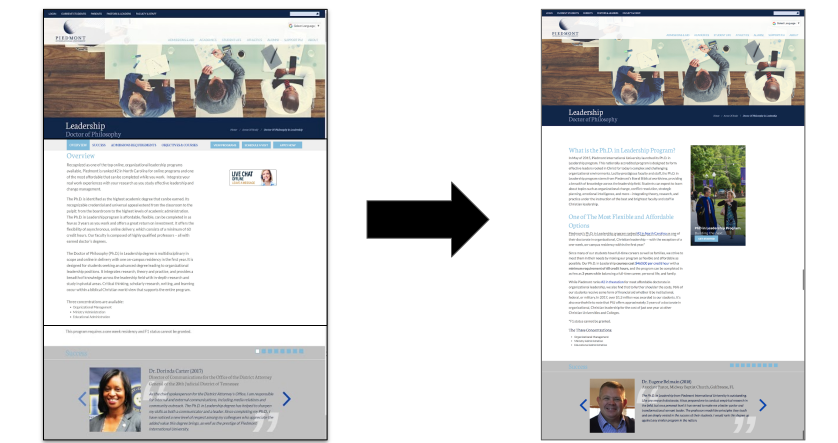
You can see, for example, that in the image to the left, their H1 is “Leadership,” their H2 is “Doctor of Philosophy,” and their H3 is “Overview.” Collectively, those headings are too vague. In many cases, including Piedmont’s H1s and H2s were global elements set by the CMS. So we focused our efforts on H3s, which were easily editable. First, we updated their “Overview” heading to state the name of the program, “Ph.D. in Leadership.” We also added key program selling points, flexible and affordable, into an additional heading. Those phrases were chosen strategically based on keyword research and user interviews. We also adapted the copy to feature key phrases like, “best online, Ph.D. programs” and “Christian leadership,” keywords that we knew resonated with their audience and were commonly used.
| Keyword | Monthly Avg. Searches |
| phd in leadership | 880 |
| best online phd programs | 390 |
| christian leadership | 2.4K |
| phd in leadership online | 590 |
Finally, we updated their chat feature with a call-to-action to learn more information, giving prospective students a clear path towards becoming enrolled students. The results? A staggering 493% year-over-year increase in organic search traffic for the month of October. Organic entrances increased by 185% year-over-year and, just as importantly, the exit rate decreased for the page by 51%.
Laurentian University
At Laurentian University, the task was much larger. Across the website, academic program pages featured poor use of headings, a lack of high search volume keywords, and very few images contributing to SEO.

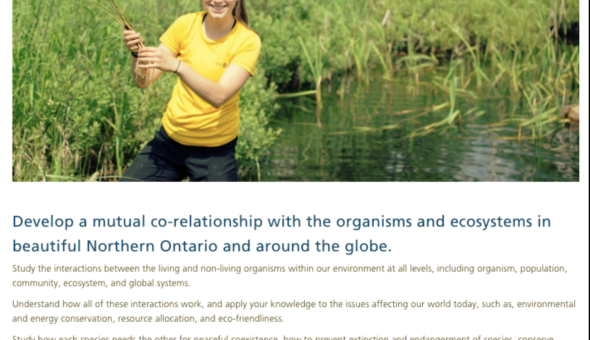
To improve the situation, the team at Laurentian purchased an SEO tool, gShift, to identify high search volume keywords, add relevant heading tags, and include images with “alt text” included. With these new tactics in place, Laurentian used a team of content writers to update 120 program overviews in 60 days, leveraging previously untapped keywords that better reflected academic program benefits across page headings, body copy, and image alt text.
The results were dramatic. Program pages saw an an average increase in entrances of 25%, with the average academic program experiencing a 10% increase in organic search traffic. More impressively, Laurentian can now boast a whopping 99 non-branded keywords that now rank their programs in #1 position.
| Keyword | Ranking |
| biomedical biology program | 1 |
| biomolecular sciences university | 1 |
| boreal ecology studies | 1 |
| business administration online bba | 1 |
These efforts have been complemented by ongoing practices and content modification that aligns with modern SEO practices. With their mindset for the future, the team is now working on improving their search results for the ever-increasing volume of screenless searches.
SEO can feel intimidating, but in reality, it’s no more difficult than any other type of content modifications. In the academic world, where content strategy is as much about removing academic jargon and simplifying language as it is managing incongruent stakeholder goals, SEO is truly one of the easiest ways of improving your web content. By understanding the on-page and external factors used by search engines to rank your content, and by making small but strategic updates, you can make a measurable impact for your institution.
Newsletter Sign up!
Stay current in digital strategy, brand amplification, design thinking and more.


